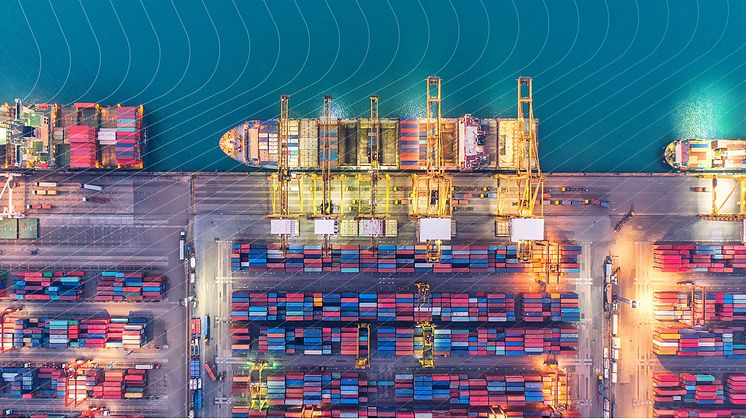
Blog post -
Technological innovation can alleviate port congestion and improve supply chain resilience
In recent weeks, ports around the world have been hit by delays and backlogs caused by factors including a surge in demand, a lack of empty containers, and the coronavirus – the latter manifesting as mass quarantining, social distancing, illness, and lockdowns. In the UK, these issues were compounded by fears of a no-deal Brexit.
Across industries, the challenges of the global pandemic have been met by digital transformation on a scale beyond most CIOs’ wildest dreams. The turmoil currently facing ports and global supply chains can also be met by technological innovation that improves safety, efficiency, and sustainability. In fact, there have long been calls for new, digital and automated ways of working in the maritime industry.
“Operators that want to maintain a competitive edge must adopt a digital mindset and implement smart-port technologies to stay productive, customer friendly, efficient, and competitive,” concluded the Boston Consulting Group in a 2018 blog post authored by Francois-Xavier Delenclos, Alexander Rasmussen, and Jens Riedl.
There are signs the industry is intent on seizing these opportunities. One recent example is the successes of DCSA – an independent organization established by several of the world’s largest container shipping companies – in publishing standards covering just-in-time shipping as well as the bill of lading. The potential benefits from these initiatives are massive. A recent just-in-time study at the Port of Rotterdam demonstrated fuel savings of 8-9 per cent.
Ports and other organizations that heavily invest in automation and digitalisation have already benefited from increased resilience over the past year. St. Lawrence Seaway Management Corporation credits technology implemented over the past 20 years for its role in the Seaway’s response to the pandemic.
“Our state-of-the-art Hands Free Mooring system, which has eliminated the need for ships’ crews and Seaway personnel to manually tie up ships at locks, has greatly facilitated safe lock operations and enabled social distancing,” Terence Bowles, St. Lawrence Seaway Management Corporation president and CEO told Canada’s Recorder & Times earlier this year.
Cavotec’s hands-free mooring system, MoorMaster, is installed in 15 locks along the St. Lawrence Seaway, thereby allowing ships to travel from the Atlantic Ocean to North America’s Great Lakes without ever putting out a mooring line. In a submission to Canada’s National Post, Bowles added that the use of hands-free mooring in the locks “ensures no close contact is required between ship crews and Seaway staff.”
Innovative technology is a proven solution to port congestion unrelated to pandemics as well. In the St. Lawrence Seaway, MoorMaster technology speeds up each lockage by some 20 per cent (seven minutes) increasing productivity for the Seaway and its customers. A container port looking to increase its throughput is New Zealand’s Napier Port.
“Our investment in MoorMaster will maximize berth availability: the time vessels spend loading and unloading at the new 6 Wharf. If not for MoorMaster, we would need to invest in an expensive extension of the breakwater which still would not let us use the berth as many days per year as we want,” said Michel de Vos General Manager Infrastructure Services at Port of Napier when their investment in MoorMaster was announced in November.
“Furthermore, MoorMaster will let us make more of every minute the ships are at berth. The system’s ability to reduce vessel motion will not only increase box rate, but also allow us to safely handle larger ships – even under adverse environmental conditions including infragravity waves,” de Vos also mentioned.
“Never waste a good crisis" as the saying goes and this is as true in the current situation as it will ever be. Ports need to weather the current supply chain disruptions and put out the fires causing it. However, this is also the time to prepare for growing volumes as pursuit of efficiencies and less carbon-intensive transport pushes more freight to the seas. The right approach to grow capacity is to do it in a way that also minimizes the environmental impact and maximizes the safety of port workers.
By Nicklas Vedin, Product Manager Cavotec MoorMaster.



